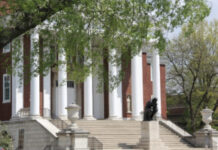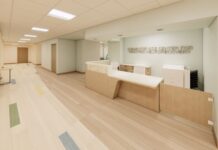So far, said principal investigator Charles Ross, three patients — the first to undergo the treatment — continue to do well.
Peripheral vascular disease (PVD) develops when arteries become clogged with plaque — fatty deposits that limit blood flow to the legs. Clogged arteries in the legs greatly increase the risk for heart attack or stroke. The condition causes weakness or pain in the legs — and in severe cases can lead to amputation.
Less severe cases of PVD can be treated with minimally invasion techniques, such as balloon angioplasty and stenting. More severe cases require bypasses, and in those cases, it is best of use a patient’s own veins.
Past procedures using man-made grafts have not been as effective in treating the disease as those using a person’s own veins. But that option isn’t always available.
That was the case with Billy Buckman, 54, of Louisville. He had two bypasses before undergoing the new procedure.
“I was having problems with numbness and lack of circulation to my (left) leg and foot, so I expected another bypass was in my future,” Buckman said.
Instead, he received his new graft in April and was “back on my feet within days. Once the surgery was done, it was like turning a light switch — I could feel the blood flow. The pain and numbness were totally gone.”
With the new procedure, Ross and team members Marvin Morris, Amit Dwivedi, and Stuart Williams, harvest stem cells from a patient’s own fatty tissue. They then attach those stem cells to standard artificial grafts in the operating room.
The idea of lining man-made grafts with stem cells to enhance long-term results is not new, Ross said. What is revolutionary, however, is taking the process out of the lab and into the operating room, where it can be safely and efficiently accomplished in a single procedure.
“This ultimately could make the technology available in any hospital where vascular bypasses are performed,” he said.
The procedure for isolating stem cells from fat and using them to coat medical devices was developed by Williams, executive and scientific director of the Cardiovascular Innovation Institute, a collaboration of UofL and Jewish Hospital & St. Mary’s HealthCare.
“We have many more procedures to perform before this technique can be approved by the FDA, but our initial results are excellent and show great promise in helping to alleviate the pain and suffering thousands of patients experience from PVD,” Ross said.



























